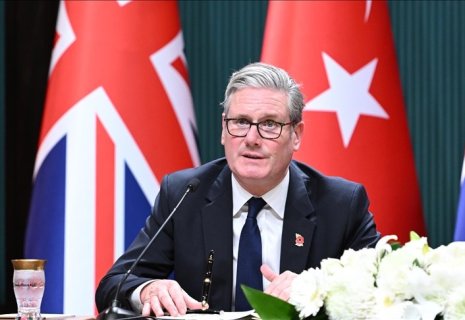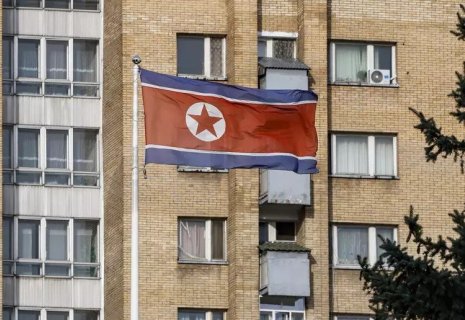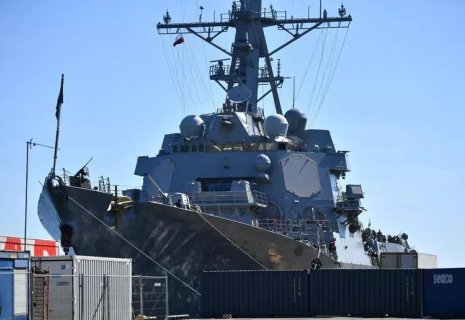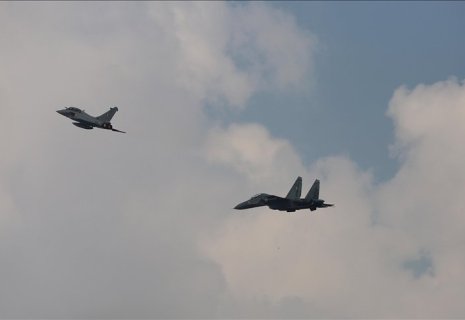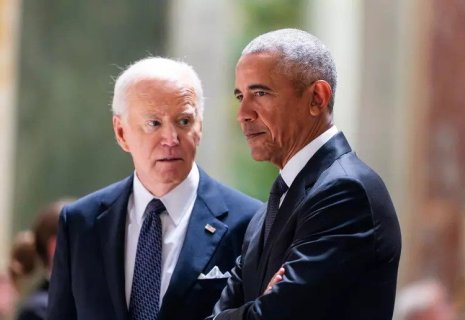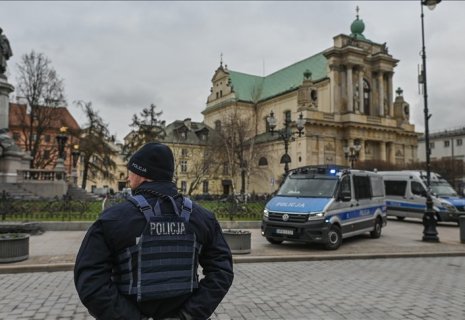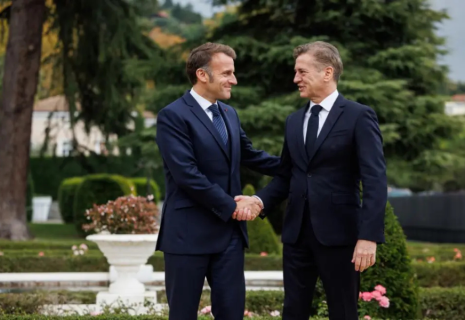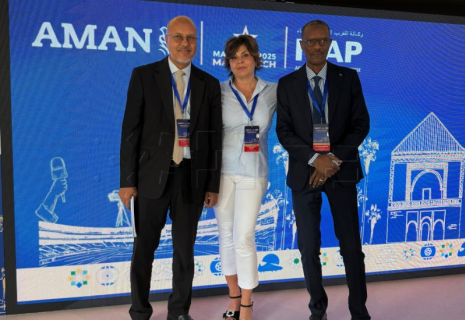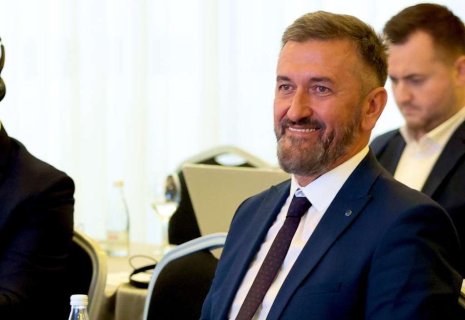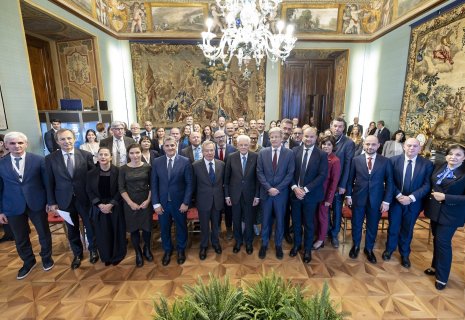
Opinion: Battle for Arctic security shapes global geopolitics
By Aytan Aliyeva
Why the Arctic matters
The Arctic region is the northernmost region of Earth, surrounding the North Pole and lying north of the Arctic Circle. It comprises the Arctic Ocean and the northern territories of Russia, the United States (Alaska), Canada, Denmark (Greenland), Norway, Sweden, Finland, and Iceland. The rapid warming is shattering sea ice and creating faster Asia - Europe shipping corridors, such as Russia's Northern Sea Route and Canada's Northwest Passage, which is reshaping global trade. The region's strategic importance arises from its potential to hold significant resources, including about 13% of the world's undiscovered oil, 30% of its natural gas, and substantial critical minerals. This makes the region a crucial energy and materials hub for countries like Russia, the U.S., and Norway. The security stakes are rising as Russia expands its northern bases and icebreaker fleet, while NATO allies increase their presence to safeguard missile warnings, submarine routes, and satellite communications. Despite not being an Arctic state, China considers itself a "near-Arctic" power and is promoting a “Polar Silk Road” (PSR) through shipping, science, and investment. Trans-Atlantic partners prioritize freedom of navigation, environmental protection, and a rules-based order. The Arctic has transformed from a zone of cooperation and scientific exploration into one of strategic competition, climate urgency, and great-power rivalry.
Geopolitical developments - Timeline (2015-2025)
From 2015 to 2017 the Arctic shifted from a cooperative, Arctic Council-led space into competition as Russia reopened and modernized Soviet-era bases on the Kola Peninsula and Franz-Josef Land and China began presenting itself as a "near-Arctic state". By 2017, Moscow and Beijing were coordinating on Northern Sea Route (NSR) shipping. In 2018, China formally launched the “Polar Silk Road” with the release of its Arctic Policy White Paper, proposing infrastructure, port, and research partnerships, which led to dual-use concerns in the West. From 2019 to 2020, evidence that the Arctic was warming over three times the global average coincided with longer NSR and Northwest Passage seasons and an uptick in security. NATO and Russia expanded High North exercises; the U.S. reactivated the Second Fleet; and Russia upgraded the Northern Fleet's air defense and radar networks, as political trust decreased. By 2021, the competition had become explicit. The EU updated its Arctic policy to support a peaceful, rules-based, low-fossil fuel approach, while Russia's Arctic Strategy prioritized the NSR, resources, and security. Meanwhile, shipping lines began testing Asia-Europe routes that could reduce transit times by up to 40%. Russia’s invasion of Ukraine in 2022 froze Arctic Council cooperation with Moscow, militarized regional politics, accelerated NATO's integration of Arctic security, intensified Russia’s unilateral development, and prompted the U.S. National Strategy for the Arctic Region. In 2023, Finland joined NATO on April 4, creating a continuous northern defense corridor. Amid sanction-driven eastern flows, Russia-China coordination deepened, and NSR volumes hit records. In 2024, Sweden's accession meant that all Arctic states except Russia were in NATO. The Nordic Response 2024 exercise involved more than 20,000 troops and the U.S. issued a Department of Defense (DoD) Arctic Strategy. China expanded its Polar Silk Road research and logistics in northern Russia. By 2025, the region embodied the convergence of climate, energy, and security: Russia promoted the expansion of the Northern Sea Route (NSR) and the Arctic LNG-2 project despite sanctions, China balanced its partnership with Moscow with neutrality toward the West, NATO consolidated its northern infrastructure and commands, the EU advanced the green transition through its partnership with Greenland for critical minerals.
China’s “Polar Silk Road” (PSR) strategy
The Polar Silk Road is seen as a part of the wider Belt and Road Initiative (BRI), which connects East Asia with Europe and North America via the Arctic.This initiative creates new shipping routes, allows access to resources, and increases China's global influence.
In recent years, Chinese policy has evolved into a more comprehensive approach covering four main areas: scientific and academic presence, economic investment, political and diplomatic engagement, and increasingly, military and dual-use dimensions. In terms of science and academia, China operates research stations in the Arctic (e.g. the Yellow River Station in Svalbard) to gain legitimacy and contribute to polar climate and geo-research. In economic terms, China has engaged in shipping experiments and infrastructure cooperation (ports, cables and logistics), as well as developing resource ties (natural gas and mining) in the Arctic region. Additionally, China cooperates with Russia in the Arctic. From the perspective of the U.S. and its allies, China’s activities in the Arctic are viewed with increasing concern: the U.S. strategic community interprets the PSR as a geopolitical tool aimed at accessing resources, expanding influence, and having possible security implications.
Chinese actions reflect both ambition and pragmatism. Officially, China continues to emphasise 'stable, peaceful cooperation' in the polar regions, but in practice, Beijing has participated in joint patrols with Russia's coast guard in the Arctic for the first time (October 2024) and has received shipments of Russian Arctic LNG (September 2025), underlining resource-link and route-link execution even amid broader constraints. China appears to be shifting its focus from the 'shipping corridor dream' to a broader presence and option-setting strategy. By investing in Arctic science, logistics, infrastructure and resource access, China aims to maintain its presence in the region while navigating strategic challenges. The objective of becoming a "polar great power" by around 2030 remains, but the framing of this ambition is increasingly in the long term.
Russia’s strategic approach to the Arctic region
For Russia, the Arctic is not just a distant frontier, but a core part of its national identity, economic development and security strategy. The region contributes nearly 10% to Russia’s GDP, represents 20% of its exports, and contains the majority of its undiscovered hydrocarbon reserves. As the climate warms and Arctic ice retreats, Moscow sees new opportunities to exploit resources, open new sea routes, and strengthen its geopolitical influence.
Russia’s vision for the Arctic is outlined in a series of high-level policy documents that set out the state’s long-term ambitions. The four main pillars of these strategies are economic development through resource extraction, the expansion of the Northern Sea Route (NSR) as a global transport corridor, the strengthening of national security and sovereignty, and the improvement of social and living conditions in Arctic regions.
The Arctic plays a fundamental role in Russia’s economic strategy. Moscow considers the Arctic to be its “resource base of the 21st century”. Major energy projects such as Yamal LNG and Arctic LNG-2, as well as other oil and gas developments, are key drivers of the Russian economy. The state aims to increase cargo turnover from approximately 31 million tonnes in 2019 to 130 million tonnes by 2035. Although international transit remains limited, the route is important for domestic shipments and exports to Asia. Russia’s plans include expanding port infrastructure, constructing pipelines and logistics hubs, and modernizing Arctic settlements to sustain industrial activity. Moscow is investing heavily in its nuclear-powered icebreaker fleet, satellite systems and meteorological networks to secure uninterrupted navigation.
The Kremlin presents the Northern Sea Route as an alternative to the Suez Canal, offering a route that connects Europe and Asia under Russian control. Consequently, the Russian government has positioned Rosatom as the route’s main operator, integrating it into broader plans for energy exports, logistics, and national prestige.
Security and sovereignty are central issues in Russia’s Arctic policy. Over the past decade, it has undertaken a significant military build-up in the region by reopening Soviet-era bases on Franz Josef Land, the New Siberian Islands and the Kola Peninsula, and by establishing new radar, air defence and coastal missile systems. The Northern Fleet, which is headquartered in Severomorsk, has been upgraded to the status of a joint strategic command, which symbolizes the growing importance of the Arctic for national defence. These capabilities serve to protect economic assets, particularly energy and shipping infrastructure.
The Kremlin also emphasizes the social and infrastructural development of its northern territories, promising new housing, transportation links, healthcare and employment opportunities in an attempt to stabilize the declining Arctic population. However, environmental and legal concerns add further complexity. While global warming enables navigation and resource extraction, it also increases environmental risks.
Following Russia's invasion of Ukraine in 2022, its Arctic strategy underwent a significant shift. Western sanctions have disrupted international cooperation, stopped many joint projects and limited Arctic Council activities involving Russia. In response, in 2023 Moscow revised its Arctic policy, removing references to multilateral institutions and emphasizing national interests and bilateral cooperation. The updated strategy emphasizes sovereignty, self-reliance and targeted partnerships with non-Western countries. Russia continues to seek foreign investment for Arctic projects, particularly from Asian partners. In 2025, the government declared the Arctic open to “international investors from friendly states”, reflecting both economic necessity and geopolitical realignment.
Trans-Atlantic strategy for the Arctic region
The Transatlantic Strategy for the Arctic Region reflects the shared recognition of the United States, the United Kingdom and the European Union that the Arctic has become a central arena for global security, economic opportunities and environmental transformation. Once considered a remote region, the Arctic is now a strategic area linking climate, trade, energy and defence, prompting these powers to collaborate within broader transatlantic and NATO frameworks.
For the United States, the Arctic has moved to the forefront of strategic planning. Washington views it as vital for missile defence, satellite operations, maritime awareness and homeland security, as well as for countering Russian and Chinese influence. The US Arctic strategy focuses on domain awareness through enhanced sensor networks and satellite communication, cooperation with allies within NATO and partners such as Canada and the EU, cold-weather readiness through joint training, and an integrated approach linking climate, economic, and security interests. Under the Trump administration, the US adopted a more proactive and resource-driven approach to the Arctic. His policies centred on expanding oil and gas exploration in Alaska's Arctic regions, including the Arctic National Wildlife Refuge and the National Petroleum Reserve, and on reducing drilling regulations and reviving offshore exploration. Strategically, Trump highlighted U.S. interests in Greenland, recognizing its importance for defence and mineral access, while pursuing maritime and infrastructure expansion, such as commissioning the first new U.S. Arctic icebreaker in 25 years. Although he initially dismissed climate change, he later acknowledged that melting ice was opening up new trade and resource routes, framing the Arctic as a stage for great-power competition. However, his approach often prioritized unilateral US interests, raising concerns among allies about coordination within the broader transatlantic framework.
The European Union, while not a military power in the Arctic, has the region viewed through the lens of sustainability, strategic resources, and governance. The EU’s 2021 Arctic Policy advocates a peaceful, rules-based and environmentally responsible Arctic. It focuses on combatting climate change, protecting ecosystems and promoting sustainable economic activity. The EU’s priorities include securing critical raw materials for its green transition, integrating the Arctic into its industrial supply chains, and supporting research and infrastructure projects in the region. In terms of security, the EU relies on cooperation with NATO, given that most of its member states are part of the alliance, as well as on bilateral ties with Nordic and Baltic countries. The EU supports international law, particularly the UN Convention on the Law of the Sea (UNCLOS), as well as the Arctic Council, as the basis for regional governance.
Across the Trans-Atlantic alliance, several strategic convergences are evident. All parties acknowledge that the Arctic is now central to global security, trade, and energy systems, rather than peripheral. They place priority on alliances and partnerships through NATO, emphasize technological infrastructure and domain awareness, and seek to balance economic exploitation with environmental protection. All three promote a rules-based Arctic order, defending freedom of navigation and opposing the unilateral control of sea routes, particularly Russia’s dominance over the Northern Sea Route.
Nevertheless, there are still differences. The US focuses more on the military, while the EU focuses more on climate and sustainability. The UK contributes strategically through surveillance, but faces resource constraints. Europe's policy framework is behind the geopolitical changes, and operating in the Arctic is costly and complex.
Overall, China, Russia and the Transatlantic Alliance all have different yet interconnected strategies in the Arctic. China views the region as an extension of its Belt and Road Initiative and is advancing the 'Polar Silk Road' by making gradual investments in research, infrastructure, and logistics in order to gain access to energy, minerals, and trade routes. Russia treats the Arctic as a core strategic domain under its Arctic Strategy to 2035, focusing on energy exploration, the Northern Sea Route and military expansion in order to assert its sovereignty. In contrast, the Transatlantic Alliance promotes a rules-based, cooperative approach that emphasises security, sustainability and governance.The trajectory of the Arctic until 2030 will depend on ice conditions, the durability of sanctions, regulatory and insurance frameworks, and the economic viability of Arctic trade routes. The balance between these factors will determine whether the Arctic becomes a new global commons of cooperation or a front line of lasting great-power rivalry.


